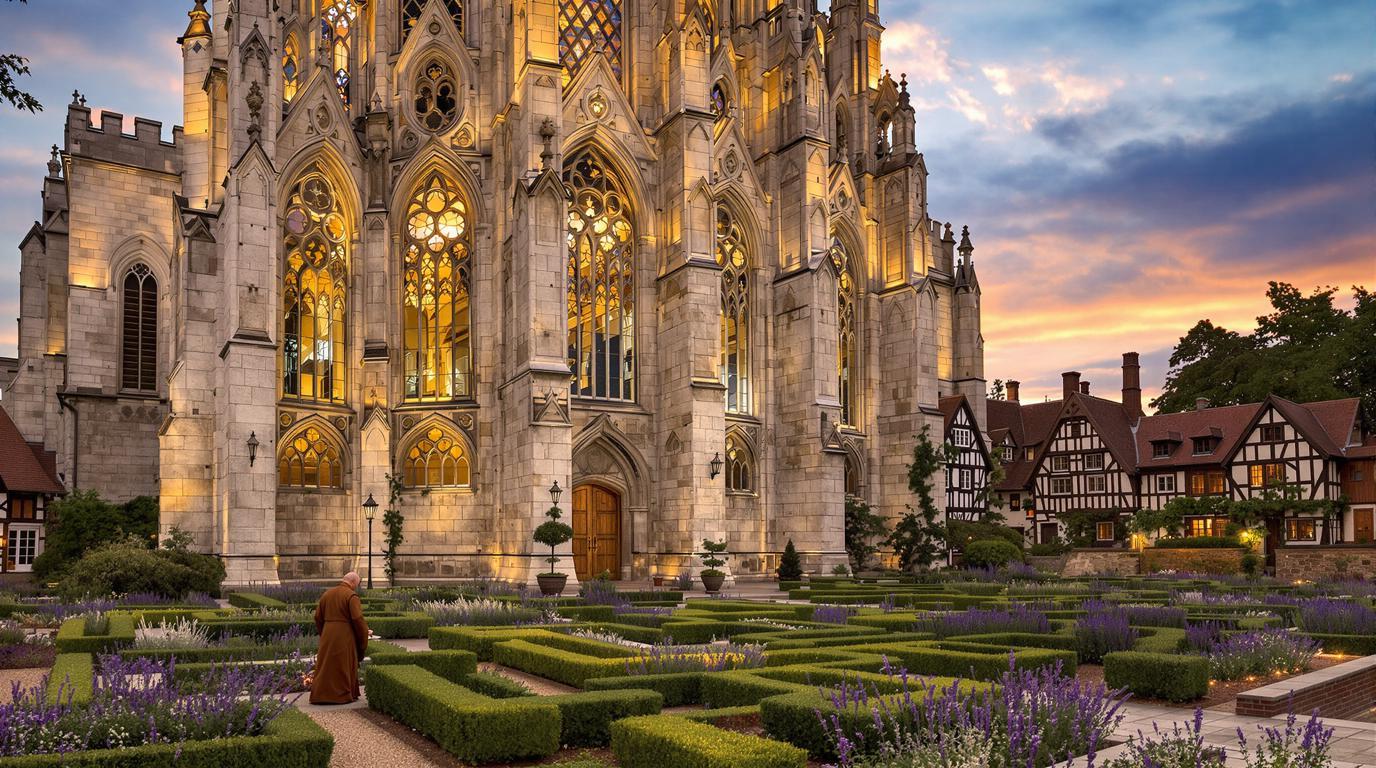A medieval village in eastern France has been captivating visitors for centuries with its magnificent abbey, rich history, and peaceful ambiance. St-Antoine-l’Abbaye, nestled in the rolling hills of Isère, is one of France’s most beautiful villages and a hidden gem along the legendary Santiago de Compostela pilgrimage route. This extraordinary settlement combines stunning Gothic architecture with fascinating medical history in a setting that feels frozen in time.
A sacred village born from ancient relics
St-Antoine-l’Abbaye’s story begins with the arrival of relics belonging to Saint Anthony the Great, the Egyptian monk known as the father of monasticism. In the late 11th century, these precious remains transformed a simple Benedictine priory into a powerful religious center. The Hospital Brothers of Saint Anthony established themselves here in 1297, creating a monastic hospital order dedicated to treating a terrifying medieval affliction known as “St. Anthony’s Fire.”
“Our abbey represents one of the most significant Gothic structures in southeastern France, with a history of healing that combined faith and early medical practice in revolutionary ways,” explains Marie Dubois, local historian and abbey guide.
Gothic grandeur that rivals Paris
The abbey church, built primarily between the 13th and 15th centuries, stands as a masterpiece of Gothic architecture. Its soaring façade, magnificent carved portals, and 45 clerestory windows create a space filled with mystical light. Inside, visitors discover priceless walnut choir stalls, Aubusson tapestries, and a 17th-century organ that still resonates during summer concerts. Like other medieval villages with hidden histories, St-Antoine guards its secrets in every stone.
Medieval medicine meets spiritual healing
Perhaps most fascinating is the village’s medical heritage. The Antonines pioneered treatments for ergotism (St. Anthony’s Fire), a painful disease caused by fungus-contaminated rye. The abbey’s museum displays surgical instruments and therapeutic techniques developed by these monk-physicians, offering a rare glimpse into medieval healthcare. Their legacy continues in the abbey’s peaceful medicinal garden, planted with healing herbs once used in their remedies.
A living museum of half-timbered beauty
Beyond the abbey, St-Antoine charms visitors with its perfectly preserved medieval streetscape. Half-timbered houses with mullioned windows line narrow cobblestone lanes. The Grande Rue features a medieval market hall where merchants have gathered for centuries. Unlike Europe’s underrated cities, this village wears its authenticity proudly, without pretense.
“What makes our village special is that we still live much as our ancestors did. When the medieval festival happens, it doesn’t feel like a reenactment—it feels like coming home,” shares Jean Moreau, a seventh-generation resident.
Step back in time at the annual medieval festival
The village truly comes alive during its annual Medieval Festival in early August. Streets fill with costumed performers, artisans demonstrate forgotten crafts, and musicians play ancient melodies. Visitors can sample traditional foods, watch jousting displays, and experience the Middle Ages in an authentic setting far from the tourist crowds of more famous European destinations.
Sacred music in a sacred space
Summer evenings in St-Antoine bring another special experience: sacred music concerts performed in the abbey church. The building’s remarkable acoustics transform ancient chants and classical compositions into transcendent experiences. Sitting in the nave as twilight filters through centuries-old stained glass creates memories that linger long after visitors return home.
A traveler’s guide to St-Antoine-l’Abbaye
The village is best explored on foot, with comfortable shoes essential for cobblestone streets. Spring (March-May) offers lower prices and fewer crowds, while summer brings festivals and warmer weather perfect for outdoor dining. Local restaurants like Auberge du Chapeau Rouge serve regional specialties featuring local produce and traditional recipes. For those seeking tranquil experiences away from busy tourist destinations, St-Antoine provides peaceful accommodations in historic buildings.
As shadows lengthen across the abbey courtyard and church bells mark the day’s end, St-Antoine-l’Abbaye reveals its true magic. This isn’t just a picturesque village—it’s a living testament to human faith, ingenuity, and endurance. In an age of manufactured experiences and Instagram-friendly destinations, St-Antoine offers something increasingly rare: an authentic encounter with history that continues to breathe, heal, and inspire.
